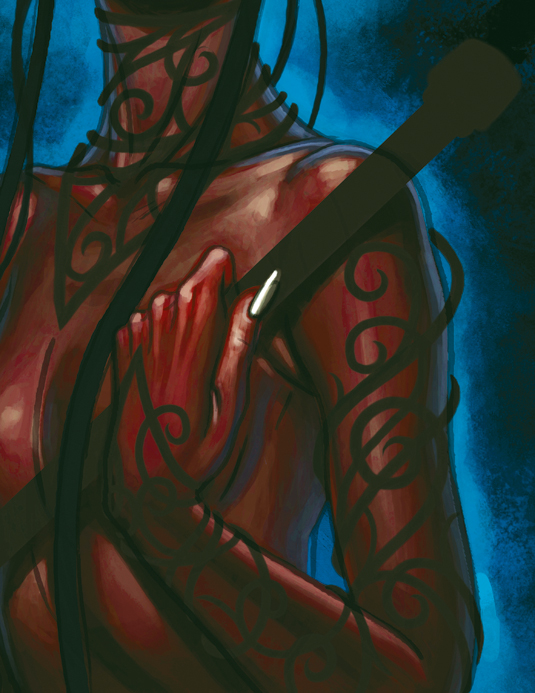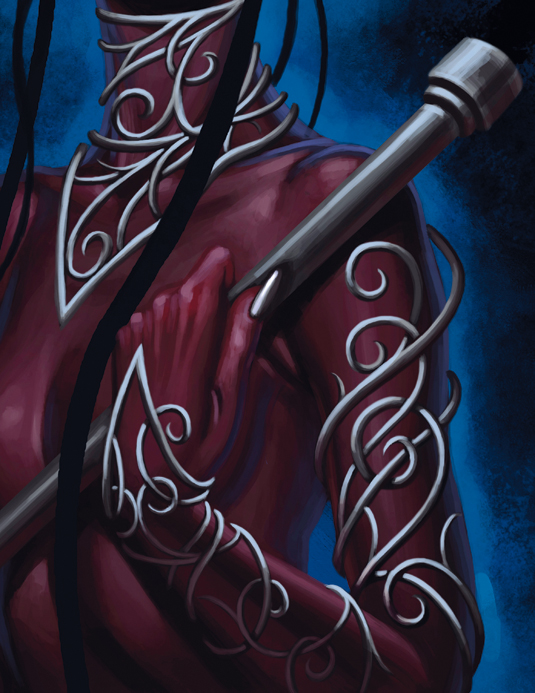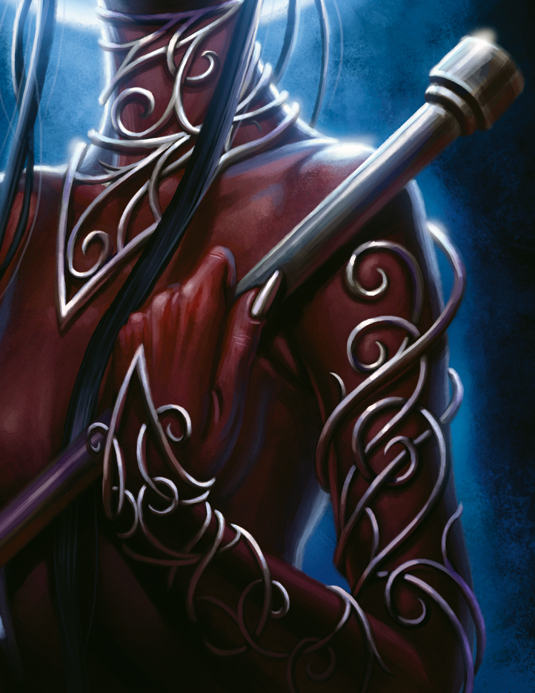Mastering metals: how to depict silver
In this video, Italian artist Sara Forlenza explains how she achieves the look of silver in her digital art.
OK, you've heard this before, but you should start by gathering references, so that you can observe real-life examples of silver objects. The metal reflects light, and the intensity of this reflection depends on whether its surface is polished or unpolished.
In ancient times, silver was used to make mirrors and this gives us more clues on how to paint it. Here I've chosen to represent the polished silver as an ornamental piece.
It's a soft metal and so unsuitable for the manufacture of weapons and shields I'll need to use brushes that feature no special texture or effects, because I want the silver to appear smooth, and I'll use strong contrasts of light and shadows to suggest that it's shiny.
01. Start in the dark

I start with a darker colour as the metal's base, and finish by painting the highlights. The ambient light in my picture is a cool colour, so I choose a dark, warm grey as a base.
On any silver object a cold-to-warm contrast between light and shadow will be particularly noticeable, because of the metal's reflective nature.
02. Curves and light

I select my silver colour and start to paint the lighter areas, bearing in mind the shape of the metal as it curves around the character's body.
I pick a dark bluish grey because the silver colour is influenced by the scene's dominant colour: a dark blue. In certain areas I paint the reflected colour of the character's skin.
Daily design news, reviews, how-tos and more, as picked by the editors.
03. Hard reflections

I define the silver's surface using a very light colour, which is almost the same colour as the light. I use a hard-edged brush to emphasise the reflected light.
I push the skin's reflections and from the light behind the figure, and with a very soft brush add flashes of light where the metal is closer to the light source.
Words: Sara Forlenza
Sara Forlenza is a freelance illustrator living in Italy, where she works on book covers, digital card products and role-playing games. This article originally appeared in ImagineFX issue 111.
Like this? Read these...
- Combine fantasy and realism for striking creature art
- Free Photoshop brushes every creative must have
- Great examples of doodle art

The Creative Bloq team is made up of a group of art and design enthusiasts, and has changed and evolved since Creative Bloq began back in 2012. The current website team consists of eight full-time members of staff: Editor Georgia Coggan, Deputy Editor Rosie Hilder, Ecommerce Editor Beren Neale, Senior News Editor Daniel Piper, Editor, Digital Art and 3D Ian Dean, Tech Reviews Editor Erlingur Einarsson, Ecommerce Writer Beth Nicholls and Staff Writer Natalie Fear, as well as a roster of freelancers from around the world. The ImagineFX magazine team also pitch in, ensuring that content from leading digital art publication ImagineFX is represented on Creative Bloq.
